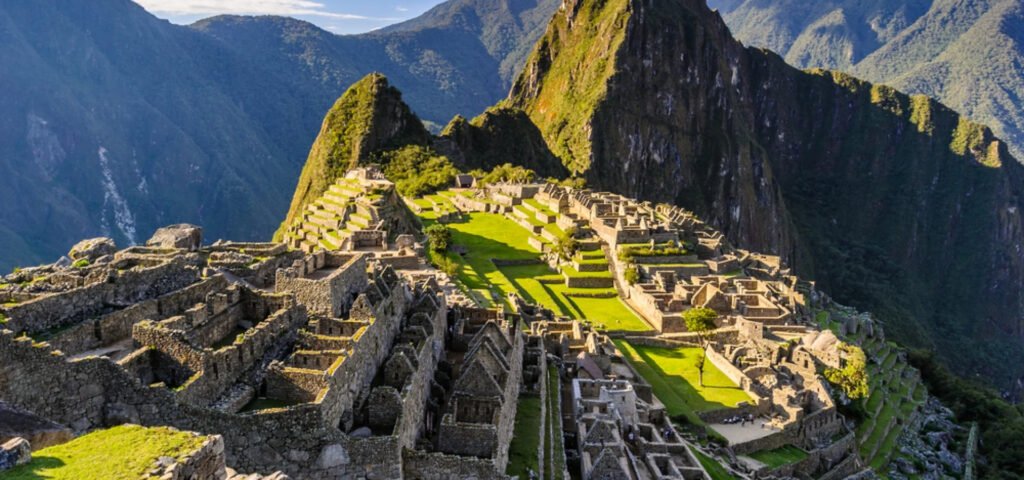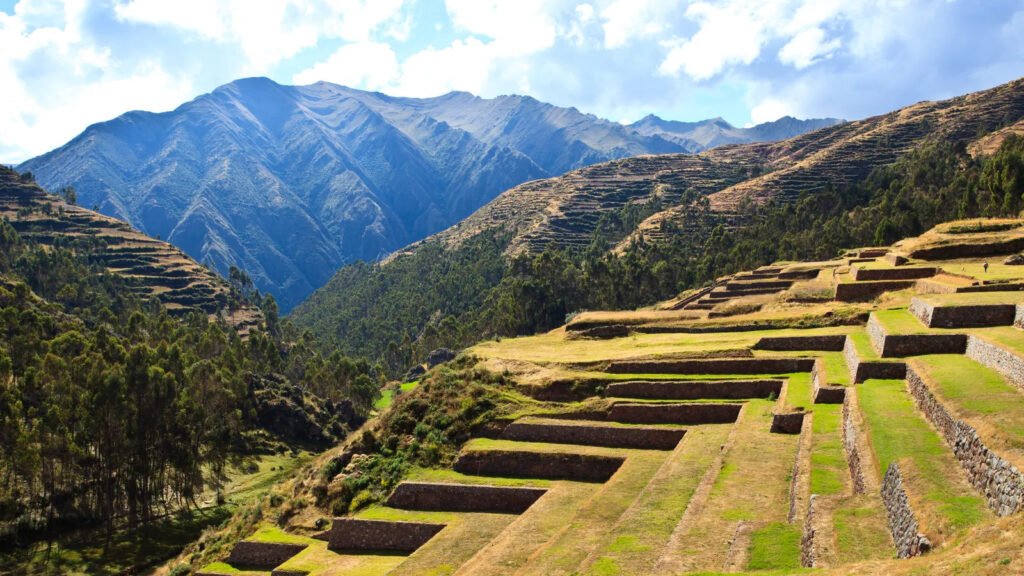Top 50 Unknown and Interesting Facts about Machu Picchu: The Lost City of the Incas
One of the most famous relics of the Inca Empire is Machu Picchu, a magnificent archaeological wonder tucked away high in Peru’s Andes Mountains. Often called the “Lost City of the Incas,” Machu Picchu was virtually forgotten until 1911, when American explorer Hiram Bingham discovered it again.
After being named a UNESCO World Heritage site in 1983, it now welcomes millions of tourists each who are awed by its elaborate architecture, breathtaking landscapes, and significant historical background.

Machu Picchu, which was constructed in the fifteenth century, during the height of the Inca Empire, is a testament to the Incas’ engineering skills. The fact that it was built on a precipitous mountain ridge at a height of roughly 7,970 feet (2,430 meters) is evidence of the Inca architects’ inventiveness and ability to adapt to the difficult terrain.
They employed a technology called “ashlar masonry,” which has helped the buildings endure earthquakes for generations. In this procedure, the stones are carved so precisely that they fit together without the use of cement.
Historians continue to disagree about Machu Picchu’s purpose. Some people think it was a religious location or a ceremonial retreat, while others think it was a royal estate for the Inca ruler Pachacuti. Temples, agricultural terraces, and a vast system of waterways may all be found at the site, demonstrating the Incas’ close ties to the natural world and their respect for the stars.
Notable features include the Temple of the Sun, where priests may have performed rites honoring the Sun God, Inti, and the Intihuatana, a ritual stone thought to represent an astronomical clock or calendar.
Machu Picchu is still a must-see location for anybody interested in history, archeology, and the splendor of ancient civilizations. It can be reached by train or the well-known Inca Trail. Its inclusion as one of the New Seven Wonders of the World is a testament to its enduring influence and the awe it continues to arouse in people everywhere.
Here’s an in-depth look at 50 intriguing facts about this marvel, shedding light on its history, construction, and mysteries.
1. Rediscovered in 1911 by Hiram Bingham
American explorer and historian Hiram Bingham rediscovered Machu Picchu in 1911, though locals were already aware of its existence. His findings brought international attention to the site.
2. Not the “Lost City of the Incas”
Contrary to popular belief, Machu Picchu is not the “Lost City of the Incas.” Bingham originally thought it was Vilcabamba, a hidden Incan refuge from Spanish conquerors, but later studies corrected this error.
3. Constructed in the 15th Century
Machu Picchu was built around the mid-1400s, during the height of the Inca Empire under Emperor Pachacuti, who is believed to have commissioned its construction.
4. Impressive Stone Masonry
The Incas used a technique called ashlar masonry, which involves cutting stones to fit perfectly without mortar. This precision has helped Machu Picchu withstand earthquakes for centuries.
5. Located at 7,970 Feet Above Sea Level
Perched in the Andes Mountains, Machu Picchu stands at an altitude of around 7,970 feet (2,430 meters), offering breathtaking views of the surrounding peaks.
6. A Royal Estate for Inca Nobility
Machu Picchu is believed to have been a royal estate used by Inca nobility, particularly Emperor Pachacuti, as a retreat from the capital, Cusco.
7. Divided into Urban and Agricultural Sectors
Machu Picchu consists of two main sectors: an urban sector where the living quarters and temples are located, and an agricultural sector filled with terraces.
8. Terraces Were Ingeniously Designed
The terraces were constructed with layers of soil and gravel for effective drainage. This ingenious design prevented landslides and allowed farming on the steep mountain slopes.
9. Astrological Significance
The Incas aligned certain structures in Machu Picchu with celestial events. The Intihuatana stone, for example, was used to mark solstices and equinoxes, reflecting the Inca’s astronomical knowledge.
10. Home to the Intihuatana Stone
The Intihuatana stone, also known as the “Hitching Post of the Sun,” is a ritual stone used by the Incas to observe solar events. The stone was believed to be energetically powerful.
11. It Escaped Spanish Conquest
Machu Picchu was never discovered by the Spanish conquistadors, which is one reason why it remains so well-preserved. Its hidden location played a crucial role in its preservation.
12. Over 200 Structures within the Site
Machu Picchu contains more than 200 buildings, including temples, residences, storage facilities, and public spaces, demonstrating the complexity and organization of Inca society.
13. Astonishing Drainage System
The site has a sophisticated drainage system, which channels excess rainwater away from structures. This engineering feat has helped preserve the site over centuries.
14. Llamas Still Roam the Site
Llamas, native to the Andean region, still roam freely at Machu Picchu today. They were likely used by the Incas for transportation and wool production.
15. Sacred Rock of Machu Picchu
There is a large sacred rock near the entrance to the main area. Its shape is thought to mirror the mountain behind it, symbolizing the Inca’s respect for natural landscapes.
16. The Mysterious Purpose of Machu Picchu
Scholars are still debating Machu Picchu’s purpose. Some theories suggest it was a ceremonial site, an astronomical observatory, or even a university for elite Incas.
17. It Has Only One Entrance
There is only one main entrance to the site, which may have helped the Incas control who could enter the city and maintain its exclusivity.
18. Built Without the Use of Wheels
The Incas did not use wheels to transport materials. They relied on manpower and ingenious construction techniques to move heavy stones across steep terrain.
19. Home to Rare Orchids
The surrounding region is home to more than 400 species of orchids, many of which are found only in this part of Peru, adding to Machu Picchu’s biodiversity.
20. Located in a Cloud Forest
Machu Picchu is surrounded by lush cloud forest, which provides a unique ecosystem filled with diverse flora and fauna, including unique bird species.
21. The Temple of the Sun
The Temple of the Sun is one of the most important religious structures at Machu Picchu. During the winter solstice, sunlight illuminates a ceremonial stone within the temple.
22. Temple of the Three Windows
The Temple of the Three Windows is a well-known structure that offers stunning views of the Andean landscape. It is thought to symbolize the three realms in Inca cosmology: the underworld, the earthly realm, and the heavens.
23. Complex Underground Water System
The Incas created a complex system of canals and fountains to supply fresh water to Machu Picchu’s residents, showcasing advanced hydrological engineering.
24. A Sacred Valley Location
Machu Picchu sits in the Sacred Valley, a region revered by the Incas for its fertile land and connection to their deities, particularly the sun god Inti.
25. Rediscovery Led to a Tourism Boom
Since its rediscovery, Machu Picchu has become one of the most visited archaeological sites globally, contributing significantly to Peru’s tourism economy.

26. Quechua Language Origins
The name Machu Picchu is derived from Quechua, the language of the Incas, meaning “Old Peak” or “Old Mountain.”
27. Its Disappearance Remains a Mystery
Scholars are uncertain why Machu Picchu was abandoned, though it may have been due to a combination of factors, including disease or political instability.
28. A UNESCO World Heritage Site
In 1983, Machu Picchu was declared a UNESCO World Heritage Site, recognizing its cultural significance and need for preservation.
29. One of the New Seven Wonders of the World
In 2007, Machu Picchu was voted one of the New Seven Wonders of the World, highlighting its global cultural and historical value.
30. Spectacular Sun Gate
The Sun Gate, or Inti Punku, marks the entrance to Machu Picchu along the Inca Trail. It offers hikers a dramatic first glimpse of the ancient city.
31. Machu Picchu Is Seismically Stable
The interlocking stones and trapezoidal doorways make the structures at Machu Picchu resilient to earthquakes, a common occurrence in the region.
32. An Example of Sustainable Architecture
The Incas designed Machu Picchu to harmonize with the natural environment, showing a deep respect for sustainability long before modern practices emerged.
33. There Are Multiple Inca Trails
While the Inca Trail leading to Machu Picchu is the most famous, it’s part of a vast network of trails spanning thousands of miles throughout the empire.
34. Unknown to the Western World for Centuries
For nearly 400 years, Machu Picchu remained unknown to the Western world until its rediscovery by Bingham in the early 20th century.
35. Its Stones Reflect Incan Symbolism
Some stones at Machu Picchu are said to resemble constellations, mountains, or animals, reflecting the Inca’s close connection to nature and astronomy.
36. Inca Rulers Practiced Sun Worship
The Incas believed their rulers were descendants of Inti, the sun god, and performed rituals at Machu Picchu to honor this lineage.
37. No Written Records
The Incas did not use a written language, so our knowledge of Machu Picchu’s history relies on archaeology, oral traditions, and Spanish colonial accounts.
38. Qhapac Ñan – The Royal Road System
Machu Picchu was connected to other Inca sites via the Qhapac Ñan, an impressive road system that stretched across the empire.
39. Used for Agricultural Research?
Some scholars suggest Machu Picchu may have served as an agricultural research center, testing crops and farming techniques.
40. Ceremonial Fountains
The fountains in Machu Picchu are thought to have been used for ceremonial purposes, reflecting the Inca’s reverence for water as a sacred element.
41. Unique Climate Due to Elevation
Machu Picchu experiences both tropical and highland climates, resulting in frequent mist and lush vegetation.
42. Inca Trail Permits Are Limited
Only a limited number of permits are issued for the Inca Trail each day to protect the site, maintaining its natural and cultural integrity.
43. Modern Machu Picchu Town Below
The town of Aguas Calientes, located at the base of Machu Picchu, is a bustling tourist center providing lodging and services for visitors.
44. Hidden Temple Beneath the Ground
An underground temple called the Temple of the Moon is located nearby and features intricately carved rock chambers.
45. The Incas Had an Advanced Understanding of Geology
The Incas were aware of fault lines and chose to build Machu Picchu in an area with solid bedrock to support their stone constructions.
46. Sacred Coca Leaves
The Incas often chewed coca leaves as part of their ceremonies at Machu Picchu, as they considered the plant sacred and energizing.
47. Was Likely a Center of Knowledge
Some historians believe Machu Picchu could have served as a center for elite learning, as the site’s architecture and layout suggest intellectual and cultural pursuits.
48. Site of Recent Archaeological Discoveries
New discoveries, such as hidden caves and unexplored structures, continue to be made around Machu Picchu, adding to its mystery.
49. The Inca Bridge
A hidden path known as the Inca Bridge is carved into a cliff face near Machu Picchu. This precarious route was likely used as a secret escape path.
50. Open to a Limited Number of Visitors
To preserve its beauty and integrity, authorities limit the number of daily visitors to Machu Picchu, ensuring it can be enjoyed by future generations.


